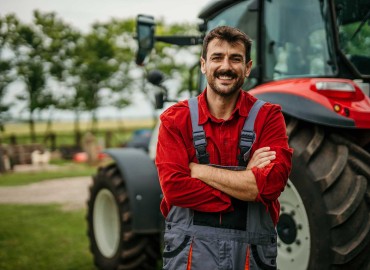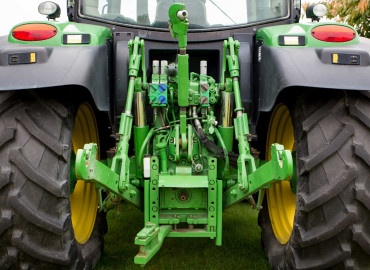Regenerative agriculture is one of the newest trends in agriculture in the world. Its purpose is based on improving the conditions of the lands used in agriculture. Regenerative farming is complemented by restorative practices.
What is Regenerative Agriculture?
 In this type of agriculture, soil health is improved with environmental awareness. For this reason, regenerative agriculture is also known as 'restorative agriculture'. Because with the practices carried out, it ensures that the soil is made more productive. At the same time, the microbiological structure is idealized again.
In this type of agriculture, soil health is improved with environmental awareness. For this reason, regenerative agriculture is also known as 'restorative agriculture'. Because with the practices carried out, it ensures that the soil is made more productive. At the same time, the microbiological structure is idealized again.
Regenerative agriculture is often confused with sustainable farming or organic farming. However, the aims of regenerative agriculture practices and regenerative agriculture are quite different. While there is no principle about tillage in sustainable agriculture, it is completely in favor of the soil in regenerative agriculture. At the same time, animal husbandry is also included in the scope of regenerative agriculture. In regenerative agriculture, there are applications such as grazing animals in agricultural forests. This practice is not included in sustainable agriculture or organic farming. For more detailed information about sustainable agriculture, you can take a look at our article 'Sustainable Agriculture and Safe Food'.
Regenerative agriculture is not only concerned with the crop, the mode of production or the drugs used. It focuses more on the soil.
Regenerative Agriculture Purposes
Regenerative agriculture aims to improve:
- Human health,
- Animal health,
- Community health,
- Soil,
- The crop planted in the ground
It is aimed to make agriculture with the least possible deterioration. At the same time, it aims to grow organic products as much as possible.
It is also a type of agriculture that centers on conservation agriculture. Therefore, it also has purposes such as the elimination of erosion.
Scope of Regenerative Agriculture
Regenerative agriculture covers many processes such as pesticides used in plowing, planted crops, grazing of animals. It also includes studies that enable sustainable food production. At the same time, this type of agriculture is supported by different states in the world to alleviate the climate crisis.
Principles of Regenerative Agriculture
Regenerative agriculture consists of several but interconnected principles. These principles are;
- Enrichment of the soil in natural ways
- Increasing water quality
- Increasing biodiversity
- Not cultivating the soil
- Restriction of chemical use as much as possible
- Integration of livestock activities
- Allowing plant rooting
Regenerative Agriculture Applications
The practices that make up restorative agriculture are quite diverse. Major applications;
- Alternate cultivation: In this way, the content of the soil is differentiated.
- Perennial plants: Perennial plants contribute to the strengthening of the soil.
- Organic fertilizer: It ensures that the soil and products remain healthy.
- No-till farming and pasture cropping: It helps to restore the soil.
- Agro-forestry activities: Within the scope of these activities, soil loss is prevented by planting trees.
- Cover plant preference: It provides suppression of weeds.
Benefits of Regenerative Agriculture
 Regenerative agriculture has very positive effects on animal, human and soil health. Studies show that with the widespread use of regenerative agriculture practices, more than 100% of the carbon emissions caused by industrial agriculture can be reabsorbed. It is also seen as a solution to climate change. Therefore, this result is very important for the future of the world. The main benefits of regenerative agriculture are as follows:
Regenerative agriculture has very positive effects on animal, human and soil health. Studies show that with the widespread use of regenerative agriculture practices, more than 100% of the carbon emissions caused by industrial agriculture can be reabsorbed. It is also seen as a solution to climate change. Therefore, this result is very important for the future of the world. The main benefits of regenerative agriculture are as follows:
- It ensures that the nutritional values of the products obtained are much higher. It also makes them tastier.
- It reduces soil losses by preventing erosion.
- It ensures that people engaged in agriculture are less in contact with chemicals. In this way, it reduces the risks to health.
- It ensures the protection of natural resources. It also helps to use these resources efficiently.
- It allows the soil to heal.
- Within the framework of restorative agriculture supports in the world; Farmers' rights, working conditions as well as incentives are regulated. In this way, it encourages people to produce.
 en
en  tr
tr 






























